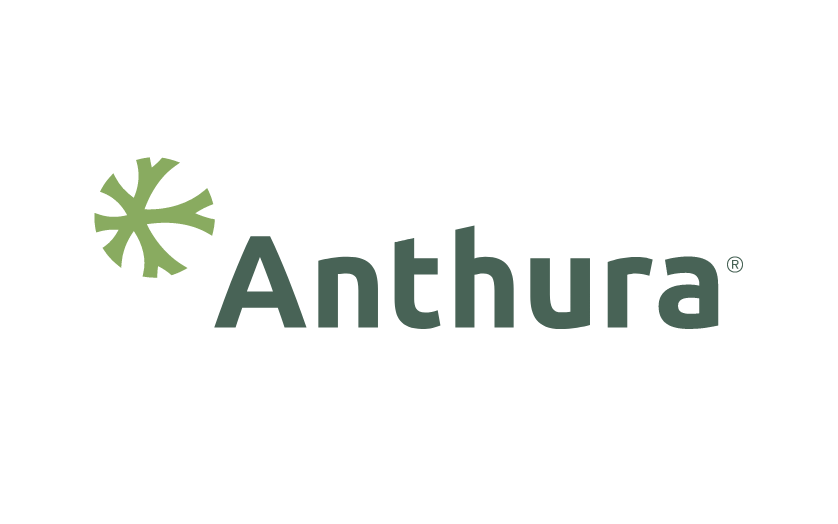Toine Overgaag, the owner of Westerlay Orchids, is originally from ‘s-Gravenzande in the Netherlands, where his grandfather grew tomatoes. In 1978, his father emigrated with his wife and four young children to Carpinteria in the USA. Joop, Toine’s father, built most of his first greenhouse there himself and started the company Westerlay Roses, named after the auction in Westerlee (the Netherlands). Since 2009, Toine has been in charge of the company, which has doubled in size since then, operating on 7.5 hectares and producing more than 3,2 million orchids annually. We had a chat with Toine, who talks passionately and enthusiastically about his company.

How did Westerlay Orchids first begin?
After my business administration studies I worked as a business consultant, because I was not really interested in roses. The company had a good and solid position on the American market and my father was in such great demand for roses that for some time there was no room for new customers. In the 90s, there was increasing competition from Ecuador and Colombia, which put pressure on the market. I joined the company and my father and I decided we needed to change course. After extensive market research, we made a plan to switch from roses to orchids in a period of five years. We delivered our first orchids, Cymbidium, in 2003 and Westerlay Roses changed its name into Westerlay Orchids. It turned out to be a good move, because there was and still is a great demand for orchids, which has enabled us to grow enormously over the years. I bought myself into my father’s company and now Westerlay Orchids is all mine.

What is the current structure of your company?
We have three locations, of which we rent one and two are owned by my parents. I am extremely ambitious by nature and would like to realise an expansion of seven hectares, which is almost double the current surface area. This will be a modern nursery, where perhaps other products than the current ones will be grown. This has still to be defined. With a new location our rental location would be cancelled. At the moment we mainly grow Phalaenopsis plants.
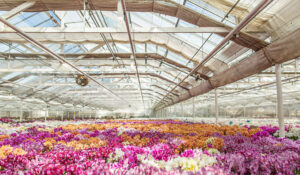
What is the biggest difference with the Netherlands in terms of production and sales?
The biggest difference with the Netherlands is that we sell little to garden centres and retail. Our major customers are mainly supermarkets and DIY (Do It Yourself) stores. The supermarkets are also different in size and content and operate in different segments.
How do you arrange the distribution?
Our company is located in California, western America. America can roughly be divided into east and west. We only supply the west, because the east is too far away and transport would be too expensive and would take too long. We deliver as far as Colorado, Seattle, sometimes Canada, as well as Denver and Salt Lake. These are places which require a two-day journey by truck.
Growers in our region have companies that are far apart and therefore we supply different products – the truck has to be filled. Are you too expensive or do you have too little? Then they will not come to you. In the short term, this can be detrimental. In the long run it is better with us than in the Netherlands, because as orchid growers we all have a different product. Westerlay Orchids grows in 6, 9 and 12 cm pots with a lot of added value, the European sizes, while other companies in California grow in inches or use Taiwanese sizes.
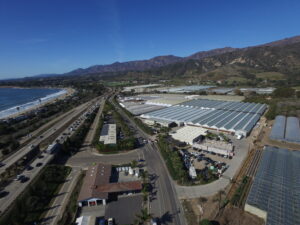
In the first quarter of 2020, America was also hit by COVID-19 and California is one of the worst affected states. The situation is still very worrying.
How did the situation develop when COVID-19 reached your state and infections increased, followed by a lockdown?
Carpinteria was affected, but not nearly as badly as Los Angeles. We have been able to keep working all this time. Of course we have observed the 1.5 meters from the beginning, we wash and disinfect our hands frequently and have worn face masks from the beginning.
For the sake of continuity, we have divided all our employees into two groups, green and orange. Each group has its own lunch time and breaks, uses the green or orange marked restrooms, and the groups do not come near each other while working. If someone on a team is infected, the whole team stays at home and only after a negative test you are allowed to come back here. The other team keeps things running during that time. Fortunately, in all this time, it has only happened a few times.
What were the biggest problems and challenges you faced up to now?
Almost immediately after COVID-19 was identified in the United States, panic spread through the country. And that is not surprising, because the virus spread very quickly, with disastrous consequences. This was in the spring of 2020 and almost all of my major customers only ordered 20% of what they normally do.
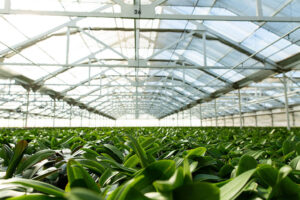
This also created great uncertainty for us, in terms of what we should do. Doing nothing would mean that we would have to throw away all the plants. I did not want to. That would not only have been a waste of the plants, but I especially wanted to come up with a solution for my staff so that they could continue working. I also wanted to make the people who were especially badly affected by this pandemic, happy. It was hard enough back then.
How did you manage to solve this?
I started calling nursing homes in the area, to donate plants to them. But that was logistically not feasible. At that time we knew almost nothing about the virus, so people were also afraid that corona could be transmitted from, for example, the packaging of our plants to the people in the nursing homes. I had to abandon that idea at the time, but I wanted so badly to make a connection between people, with a product that cheers you up and expresses my appreciation to those people who are on the front line of the pandemic.
It took two to three weeks before it started to roll, started to bloom, so to speak. I then donated thousands of plants to several major hospitals in Los Angeles.
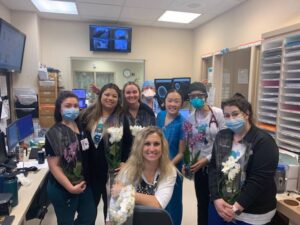
To get something positive out of the crisis as well, you have come up with the 100,000 Orchid challenge. Can you elaborate on that?
With the donation of the first plants, the idea of the 100,000 Orchid Challenge was born.
There are so many people involved, directly and indirectly, in the fight against the pandemic and I wanted to encourage them. I created the 100,000 Orchids Challenge to inspire communities in California to send orchids to frontline workers and those isolated by quarantine. It was also a challenge to see if we could reach the 100,000 plants.
In the weeks following the deliveries to Los Angeles, trucks full of orchids left the greenhouse to be delivered to hospitals and nonprofit organizations throughout California and neighboring states. In June, July and August, everything came to a halt because there were no plants available. In September we hit the 100,000 mark with a delivery of plants to a nursing home. I am very proud of that.
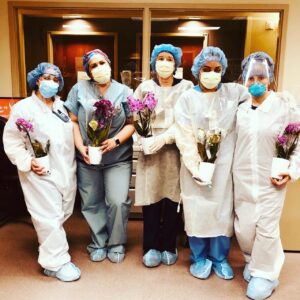
Furthermore, you could and still can order a box of orchids through our website and have it delivered to nurses, doctors or other hospital staff in California.
What are you most proud of this past year?
Of course, I am most proud of the staff. Our staff is hugely responsible, committed and does their very best.
If a staff member’s family has corona, we would like that person to stay at home. From the money that we have received from the government to support our business at this time, we pay those people who have to stay at home in that situation.
How do you picture the future of Westerlay Orchids?
In addition to possible expansion and growth, I also want to continue to dedicate myself to others. The core values of Westerlay Orchids are responsibility, pride, support and improvement, both in business and towards the local environment. With our challenge, we took our responsibility and showed our appreciation to the people affected by Covid-19 in one way or another, through a plant.
For example, in September we donated the entire weekly proceeds of our shop to a local school, USD 25,000, and we donated part of the proceeds of each pink dyed plant we sold in October to Pink Ribbon, the breast cancer fund.
What has been your experience of collaborating with Anthura?
Westerlay Orchids wants to be reliable as a supplier and needs a reliable supplier too. Anthura is such a supplier. Reliable when it comes to quality and availability of the plants, which is the most important thing for us. In addition, the collaboration with Joost (Hendriks) is going well and we are treated as an important custimer, as a long-term partner. We consider this to be of priceless value. We hope that in the future we can continue our cooperation in this way.
